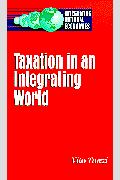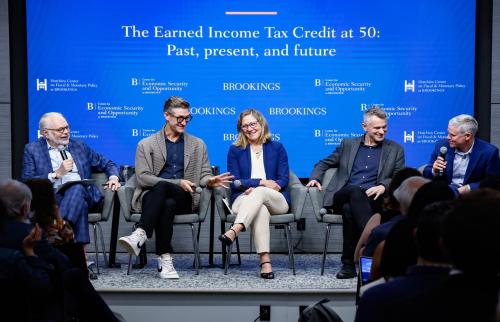Studies in this week’s Hutchins Roundup find unemployment insurance claims have remained high due to policy changes increasing their appeal during the pandemic, workers reduce their earnings when there is an increase in their unearned income, and more.
Want to receive the Hutchins Roundup as an email? Sign up here to get it in your inbox every Thursday.
Pandemic-related changes to unemployment insurance policies have kept claims high
Brendan Price of the Federal Reserve Board finds that unemployment insurance (UI) claims have remained high despite the economic recovery from the COVID-19 pandemic largely due to expansions in the program’s eligibility and generosity. For example, the Pandemic Unemployment Assistance program (PUA) expanded benefit eligibility to many who do not traditionally qualify for UI, including the self-employed, recent labor force entrants, and workers without sufficient earnings history. In many states, PUA assistance was contingent on first being denied regular UI, meaning that many non-traditional UI recipients are counted in both the regular and the PUA initial claims. The author estimates that, in the absence of the PUA program, initial UI claims for regular UI benefits would have been 20% lower from mid-2020 to early 2021. Other institutional factors, such as supplemental benefits of $300/week ($600/week early in the pandemic) and the waiving of job search requirements by many states, increased the incentives to file for UI. “As the institutional landscape returns to pre-pandemic norms, policy measures unique to the pandemic should have a diminishing impact on reported claims,” the author concludes.
Windfalls lead to lower worker earnings
Using administrative data on U.S. lottery winners between 1999 and 2016, Michael Graber at the University of Chicago and co-authors study how exogenous changes in unearned income affect American workers. Comparing workers before and after they win a state lottery, the authors find that, on average, a $1 increase in unearned income in a given period is associated with a 50-cent decrease in pre-tax earnings, a 10-cent decrease in income tax collections, and a 60-cent increase in consumption. The effect on earnings is stronger for workers with higher pre-lottery incomes, they find. These estimated income effects are larger than those from the recent literature based on Swedish administrative data, leading the authors to caution “against the use of wealth effects estimates from countries other than the U.S. as inputs for models that are otherwise calibrated or estimated using U.S. data.”
Zoning regulations bid up housing prices most in coastal cities
Using data on vacant land prices purchased for single-family home development, Joseph Gyourko of the University of Pennsylvania and Jacob Krimmel of the Federal Reserve Board estimate the “zoning tax”—the mark up in housing prices due to zoning regulations that restrict land use—across 24 major metropolitan areas in the United States. Consistent with previous findings, the authors estimate that zoning taxes are higher in big coastal markets than in interior U.S. markets. For a quarter-acre plot of land, zoning taxes are about $400,000 in the San Francisco area and between $150,000-$200,000 in Los Angeles, New York City, and Seattle. The zoning tax in Chicago, Washington, and Boston is smaller. In contrast, zoning has little effect on land prices in a wide range of other markets spread throughout the interior of the country. In major West Coast markets, the zoning tax tends to be high throughout the metro areas; in contrast, in East Coast markets, the zoning tax decreases with distance from the central core. These zoning tax estimates are large enough to play a significant role in explaining the geographic variation in housing prices, the authors say.
Chart of the week: US debt-to-GDP ratio projected to rise to historic levels over next decade, though not as much as forecast earlier despite the $1.9-trillion fiscal package enacted in March

Quote of the week:
“I would like to see tapering begin. I’d like to see it happen sooner rather than later. I’d like to see it being a slow, methodical process, where we don’t surprise the markets, and we just do this in a way that, you know, just is simple…Why did we start the asset purchases again during the pandemic? It was really for two reasons. One was monetary accommodation. But the other was getting markets functioning. And I think the market function reason was really important,” says Patrick Harker, President of the Philadelphia Fed.
“The markets are functioning now, essentially. So that reason has started to wane. Now we can start to think about, do we need the accommodation? And is the tool the appropriate tool for the situation we face? As you know, this is not your normal recession. This is caused by a pandemic. And it’s the supply constraints, not the lack of demand, which is causing the problem. So, in my mind, continuing a lot of accommodation for a long period of time, I don’t see how that solves that problem. That said, I don’t want to remove it too quickly because I don’t want us to be the cause of the economy not reaching the kind of potential we’re talking about, the kind of healing we’re talking about in our forecast.”
The Brookings Institution is committed to quality, independence, and impact.
We are supported by a diverse array of funders. In line with our values and policies, each Brookings publication represents the sole views of its author(s).











Commentary
Hutchins Roundup: Unemployment insurance, unearned income, and more
July 8, 2021